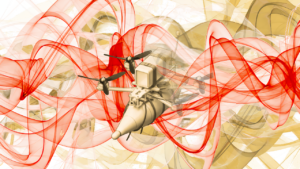I have occasionally stressed the importance of being able to simultaneously carry out development activities even as security operations are underway. My colleague Tom Barnett has also made this point, which is one of the reasons he has stressed the need for a System Administration Force to complement fighting forces. It is difficult to ask the same individual to conduct search and destroy operations in one block and then switch to a serve and protect mode in the next. Such mental switchovers can cause both confusion and angst. Nevertheless, Washington Post staff writer Ann Scott Tyson reports that the strategy in Iraq is changing to stress simultaneous activities [“New Strategy for War Stresses Iraqi Politics,” 23 May 2007].
“The overarching aim of the plan, which sets goals for the end of this year and the end of 2008, is more political than military: to negotiate settlements between warring factions in Iraq from the national level down to the local level. In essence, it is as much about the political deals needed to defuse a civil war as about the military operations aimed at quelling a complex insurgency, said officials with knowledge of the plan.”
This is similar to what happened in Kurdistan. Genuine progress wasn’t made until the Kurdish Democratic Party and the Patriotic Union of Kurdistan stopped fighting and started working together. People didn’t wait until all the political issues were worked out (they still aren’t), but the promise of cooperation was enough to jumpstart development. People moved forward on hope as much as reality. The new strategy for the rest of Iraq rests on a similar premise — start with security and move forward simultaneously with development activities.
“The plan has three pillars to be carried out simultaneously — in contrast to the prior sequential strategy of ‘clear, hold and build.’ One shifts the immediate emphasis of military operations away from transitioning to Iraqi security forces — the primary focus under the former top U.S. commander, Gen. George W. Casey Jr. — toward protecting Iraq’s population in trouble areas, a central objective of the troop increase that President Bush announced in January. ‘The revised counterinsurgency approach we’re taking now really focuses on protecting those people 24/7 . . . and that competent non-sectarian institutions take the baton from us, said [David J.] Kilcullen, [Gen. David H. Petraeus’s senior counterinsurgency adviser], offering an overview of the campaign plan. In contrast, he said, U.S. operations in 2004 and 2005 ‘had the unintended consequence of killing off Iraqis who supported us. We would clear an area, encourage people to sign up for government programs, but then we would have to leave and those people would be left exposed and would get killed.’ The plan recognizes that there are too few troops to protect all of Iraq’s population, and so focuses on critical regions such as greater Baghdad.”
The first pillar — security — is to be complemented by the second pillar — building the government’s capacity to lead:
“Next, the plan emphasizes building the government’s capacity to function, admitting severe weaknesses in government ministries and often nonexistent institutional links between the central government and provincial and local governments. This, too, is in contrast with Casey’s strategy, which focused on rapidly handing over responsibility to Iraq’s government. Such a rapid transition ‘was derailed as a strategy,’ said one person involved with the plan. Instead, he described the focus of the next 18 to 21 months as ‘a bridging strategy’ to set the necessary conditions for a handover.”
The third pillar focuses on removing obstructionists [see my previous post Profiting from Chaos that discusses obstructionists in Somalia] and why removing them is so important to making progress.
“Finally, the campaign plan aims to purge Iraq’s leadership of a small but influential number of officials and commanders whose sectarian and criminal agendas are thwarting U.S. efforts. It recognizes that the Iraqi government is deeply infiltrated by militia and corrupt officials who are ‘part of the problem’ and are maneuvering to kill off opponents, install sectarian allies and otherwise solidify their power for when U.S. troops withdraw, said one person familiar with the plan. … One source of pessimism about the plan is whether the Iraqi government has the means and willpower to weed out sectarian officials and commanders, in an atmosphere complicated by rumors and ambiguous intelligence.”
Although not listed as a pillar, there is also an outreach plan:
“Also part of the plan is reaching out to grass-roots groups such as tribes, religious leaders and provincial administrators that are moving forward on reconciliation efforts, said Kilcullen, noting a tribal agreement in Babil province last week to end violence and a tribal movement in Anbar to oppose al-Qaeda. ‘We should not restrict our view of what a “political” settlement is, solely to the Iraqi government — civil society also has a really key role to play.'”
Tyson’s article didn’t talk about all dimensions of the plan, which she writes “is a thick tome with more than 20 annexes on topics such as policy on Iraqi security forces, detainees, the rule of law and regional diplomatic engagement.” The plan undoubtedly addresses what should be considered a “pillar” and that is efforts to revive the Iraqi economy. As I have noted repeatedly over the past couple of weeks, the Pentagon has a significant effort in place that addresses that aspect of the challenges that must be faced. With the patience of the U.S. public and their representatives in Congress growing thin, the plan will need to demonstrate progress sooner rather than later. As I’ve been stressing, look to Kurdistan as the place from which lessons are best learned in the area.




